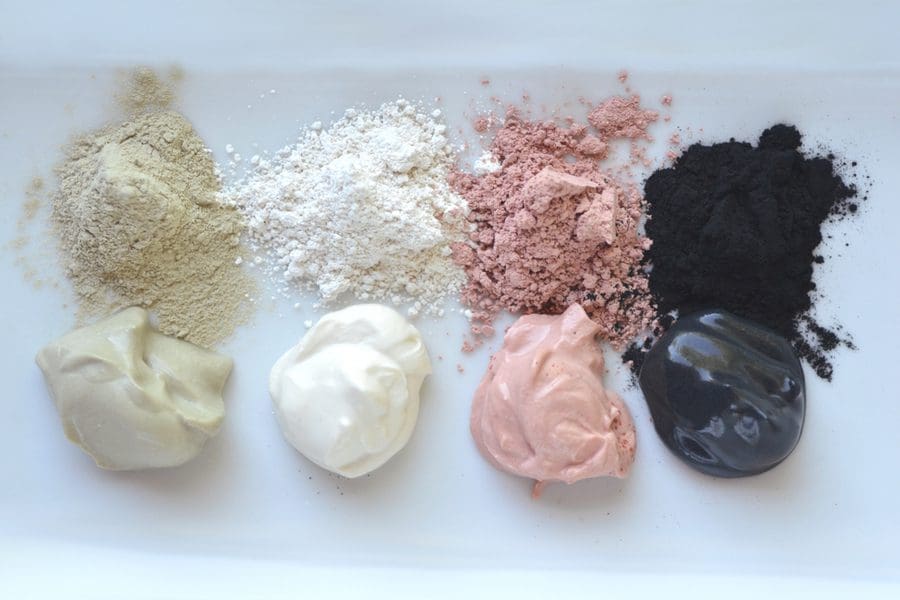Clays are present in various skincare products. It has been used for centuries to treat and protect the skin.
Clays can be found in clay deposits, which are located just below the surface of the earth. Clays are made of minerals and have a tiny molecule size. They can be used for various cosmetic purposes, as each type possesses different skin benefits.
Bentonite
Bentonite has a structure that comprises three layers which gives the clay the ability to expand in water. When bentonite is mixed with water, it has a gel-like consistency. It also becomes negatively charged, which allows it to draw out any positively charged impurities. Bentonite is often used to provide glide to shaving soaps and is an ingredient in many natural deodorants.
It works for all skin types. It is often used to draw out skin impurities and excess oils that build up during the day. Bentonite helps reduce the appearance of pores, softens the skin, and promotes blood circulation.
Kaolin
Unlike Bentonite, Kaolin doesn’t expand in water. Instead of soaking in the impurities, Kaolin attracts them and holds them on its surface. It is most familiar as White China Clay, even though it can be found in numerous colors.
When it comes to skincare, Kaolin is very mild and fit for people with sensitive skin. It removes the impurities and dirt from the skin without damaging it. It also helps to brighten the skin by stimulating circulation. Since Kaolin has bigger particles, it is known for its gentle exfoliating of the skin.
Illite
Illite clays don’t expand in water but are highly absorbent. The most popular type of Illite clay is the French Green Clay. Illite is used for normal to oily skin. It exfoliates the skin and removes oils and impurities. As the clay dries, it shrinks the pores and makes the skin feel and appear firmer. However, even though it has numerous benefits, Illite clay should only be used once per week as constant use can damage the skin.
Rhassoul
This clay is like Bentonite clay. Rhassoul’s molecular structure allows it to remove the impurities from the skin as a skin cleanser. It helps reduce dryness, evens out the skin tone, and removes blemishes. It also helps to remove excess oils and nourish the skin.






